Project management requires meticulous planning, coordination, execution of hundreds of tasks — and sometimes even more. So, it’s no wonder that even the most experienced project managers occasionally fail.
To lend you a hand on your journey, we explored project management best practices that will help you boost productivity and ensure success in the long haul.
Let’s get started.

- Project management best practices depend on the scope and complexity of projects, as well as the company’s needs, workflow, schedules, deliverables, and activities.
- Document standards, requirements, and metrics for the best results in implementing your project.
- Define organizational roles, monitor project progress, and track team time to achieve your objectives.
- Figure out project risks that may make a big mess and resolve them by establishing a risk response schedule.
Table of Contents
Practice #1: Create a business case for your project
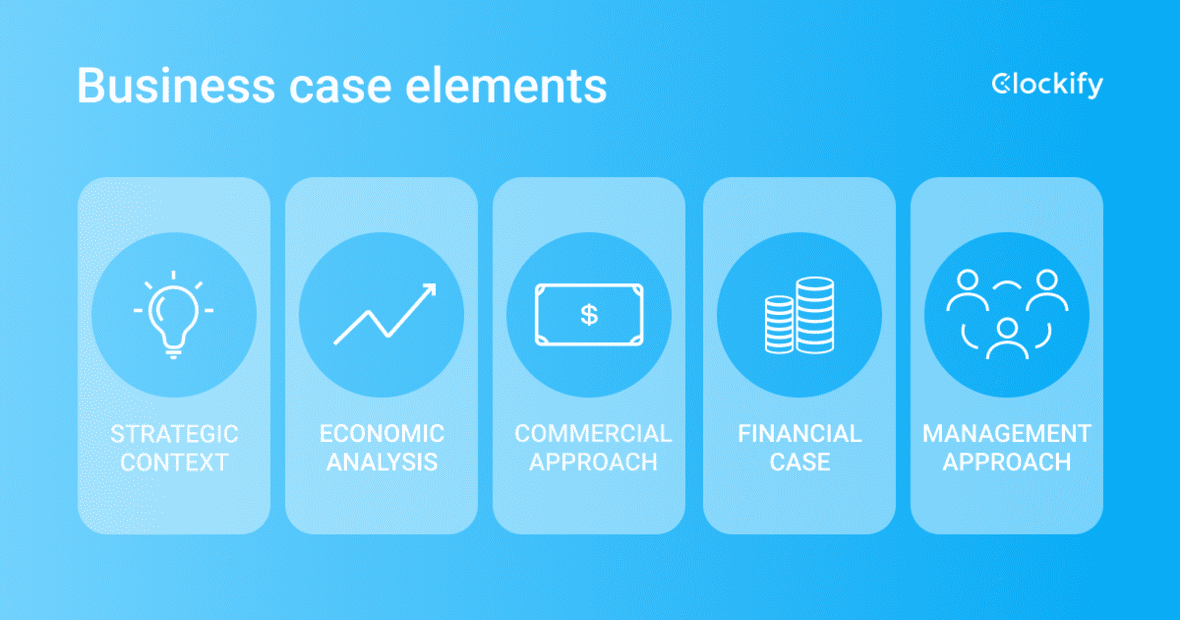
To set your project up for success, you need to create a business case. This simply means that you detail and specify all your:
- Short-term and long-term goals,
- Resources, like workforce and budget, and
- Issues that may arise along the way.
When you compile your business case, you’ll get a bird’s-eye view of how a specific project fits into your company portfolio and future business endeavors.
According to the Association for Project Management, a business case should include the following elements:
- Strategic context: what makes this project unique in providing change?
- Economic analysis: what’s the return on investment after considering the project’s profit?
- Commercial approach: what are the main risks and rewards?
- Financial case: how affordable is the project for the company in the project’s time frame?
- Management approach: who is taking on which roles, and how long does it take to implement the project?
With a foolproof business case, you can easily build a project timeline — a chronological order of project-related actions, events, and tasks.
Practice #2: Compile a project brief
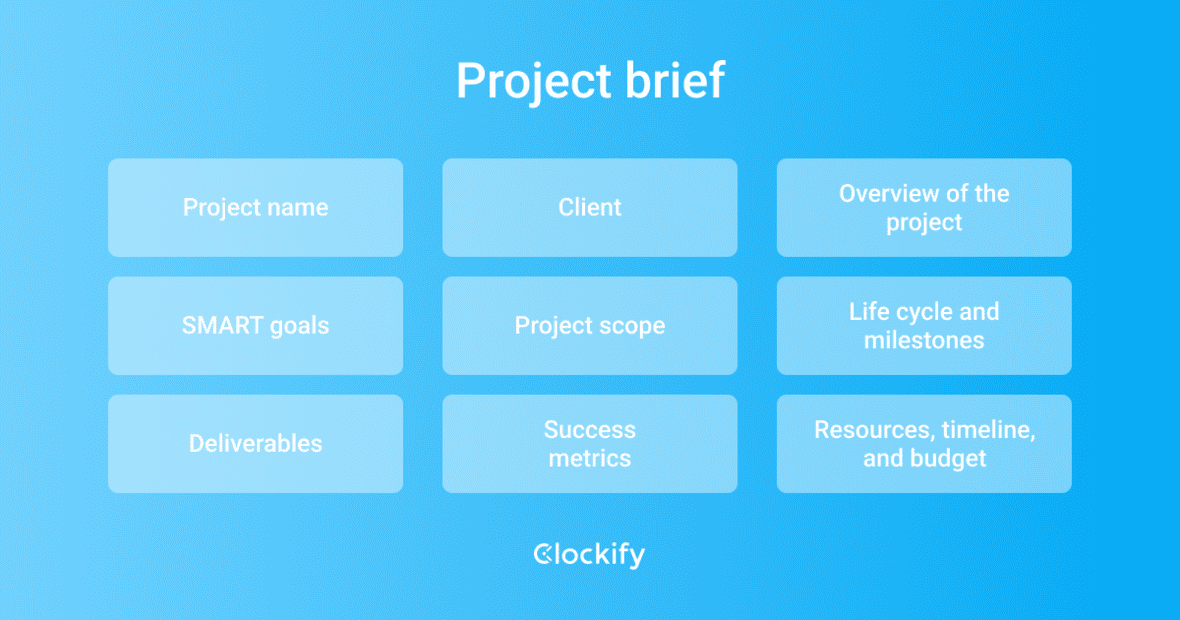
A project brief — also known as a project charter — is a short document that lays out the project life cycle and its scope. In other words, a project brief allows you to combine your possibilities and your wishes to see what’s realistic and what isn’t.
Project manager at CAKE.com, Saša Petrović, always tries to understand the needs of all the parties involved while compiling a project brief:

“I always focus on what the key stakeholders need, so that I can enable a quick and well-informed review of status and next steps. Also, I take into consideration the project stage and status in order to focus on the information that is most important for the current stage and the current status.”
In a nutshell, a project brief should include the following details:
- Project name,
- Client,
- Overview of the project,
- SMART goals — goals that are specific, measurable, achievable, relevant, and time-bound,
- Project scope,
- Project life cycle and milestones,
- Deliverables,
- Success metrics, and
- Resources, timeline, and budget.
Provided you gather this information, the next step is to feed it into your project management software. CEO and project manager at Lake, David Ciccarelli, talks about a 3-part formula for a project brief he learned at Harvard Business School and applied at McKinsey:
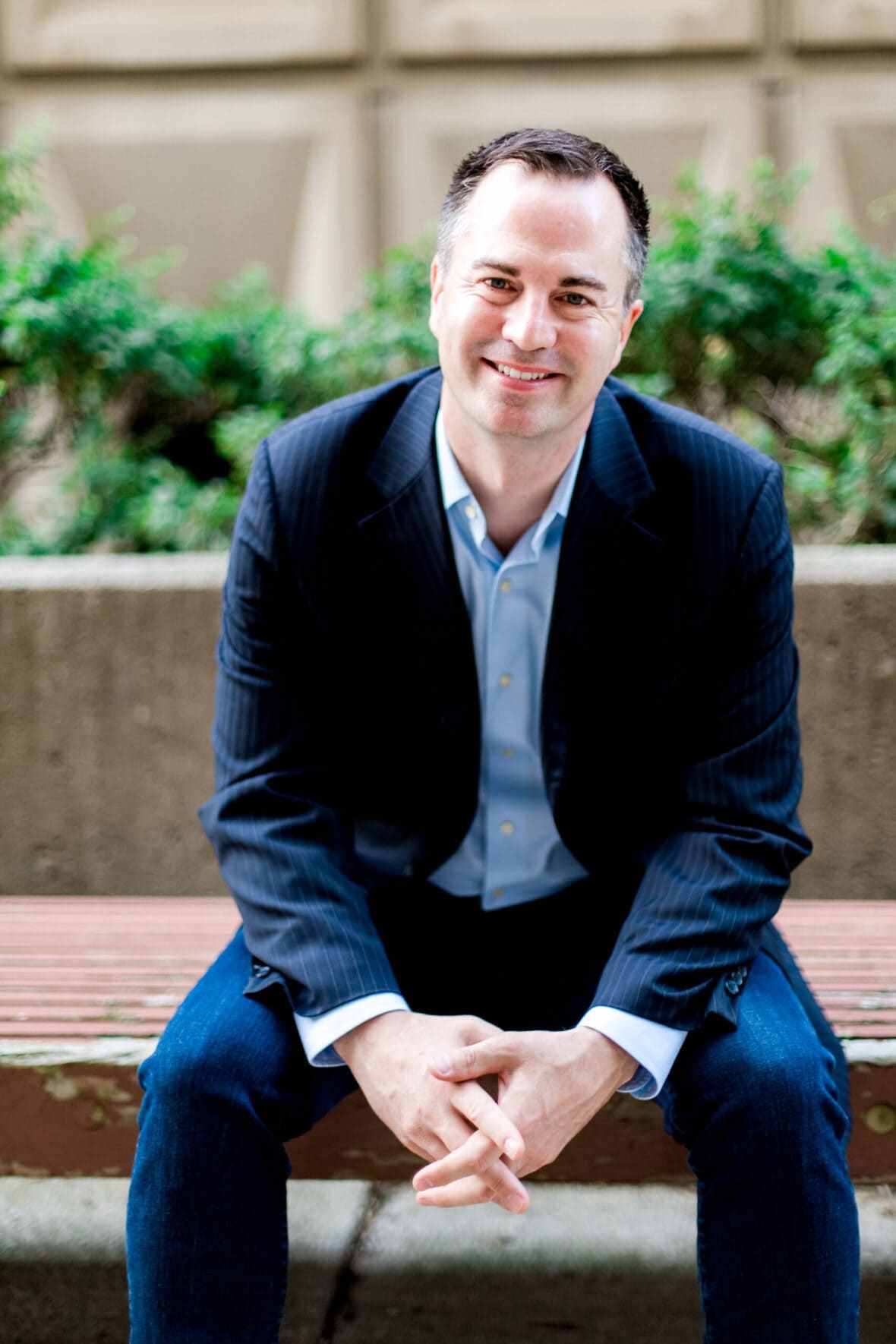
“I use the 3-part formula: situation, complication, and resolution. The situation is where we stand now. The complication is what is not working and why it needs to change. The resolution is the proposed solution for how we will solve the stated problem.”
If you apply this 3-part formula to any project brief, you’ll surely sound helpful to your clients and team members.
💡 Clockify Pro Tip
Take your pick from our curated list of the best project management software and techniques:
Practice #3: Document requirements, standards, and metrics

Now that you’ve figured out the goals you want to accomplish and the steps you need to take, it’s time to document this data for future reference.
You need to do this both for the sake of your team and the sake of future project investors.
Outlining quality standards for your projects is one of the best practices in project management. In other words, you need to set standards and success criteria for each project step.
For example, you could conduct a detailed budget review every month or so. This can be a quality standard you can set for all projects. Similarly, a success criterion could be ensuring all stakeholders sign off on project milestones.
To document requirements, project manager at CAKE.com, Slavoljub Matić, thinks that 3 characteristics are essential — time, scope, and costs:
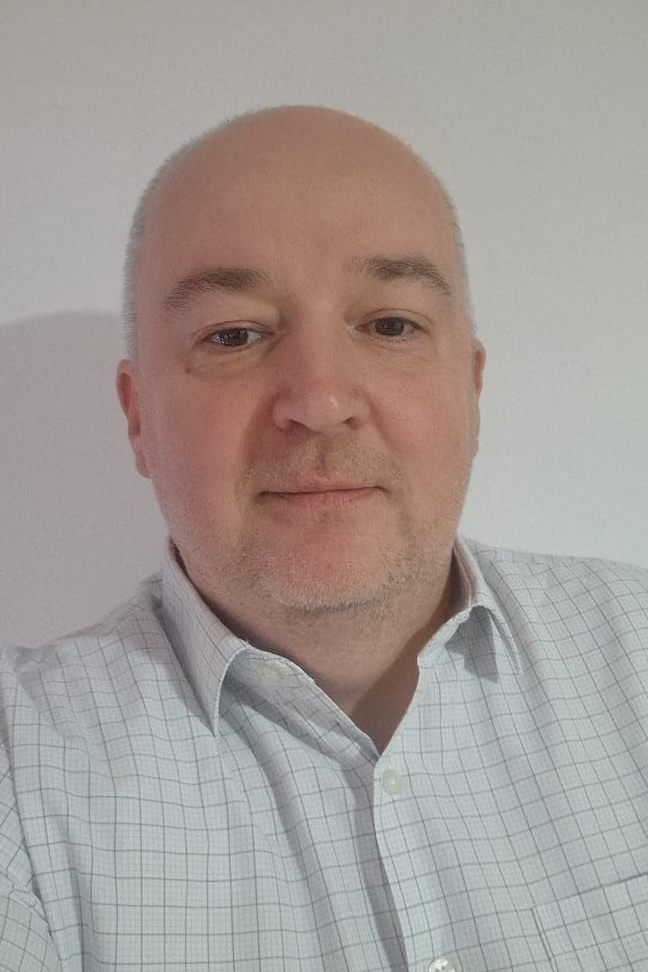
“Time — or how long the project will last. In project management, it’s essential that projects get done on time.
Scope — the scope of the project needs to be clearly defined and closely monitored throughout the project.
Costs — this item represents the entire project budget. A budget is created prior to project start. To keep the project on budget is a measure of project success.”
Finally, remember that success criteria and quality standards depend on the project stakeholder and the particular business case.
💡 Clockify Pro Tip
To make better predictions about where your projects is headed, read our guide on 11 types of forecasting models to be better able to outline success metrics for the future:
Practice #4: Define organization and roles

If you want to run a project smoothly, you need to define responsibilities and an organization underpinning your priorities.
In more general terms, we distinguish between 3 types of organizational structures:
- Functional organizations — where work activities happen around similar specialties of the staff involved,
- Project organizations — where work activities revolve around projects and project managers use their formal authority to assign employees tasks, and
- Matrix organizations — a mix of functional and project organizations.
Each type of organization has a related managing role. For example, a functional organization comprises of a functional manager who:
- Provides procedural guidance,
- Lays out functional policies, and
- Maintains technical excellence team-wide.
All this simply means that this individual focuses narrowly on the specialties of their team.
On the other hand, a project manager is in charge of:
- Planning,
- Staffing,
- Organizing,
- Evaluating,
- Controlling, and
- Leading the project.
In other words, the project manager focuses on the when and what of the project — and not on the specialties of team members.
Project manager at CAKE.com, Uroš Čubrović, emphasizes 3 key traits of good project leaders:
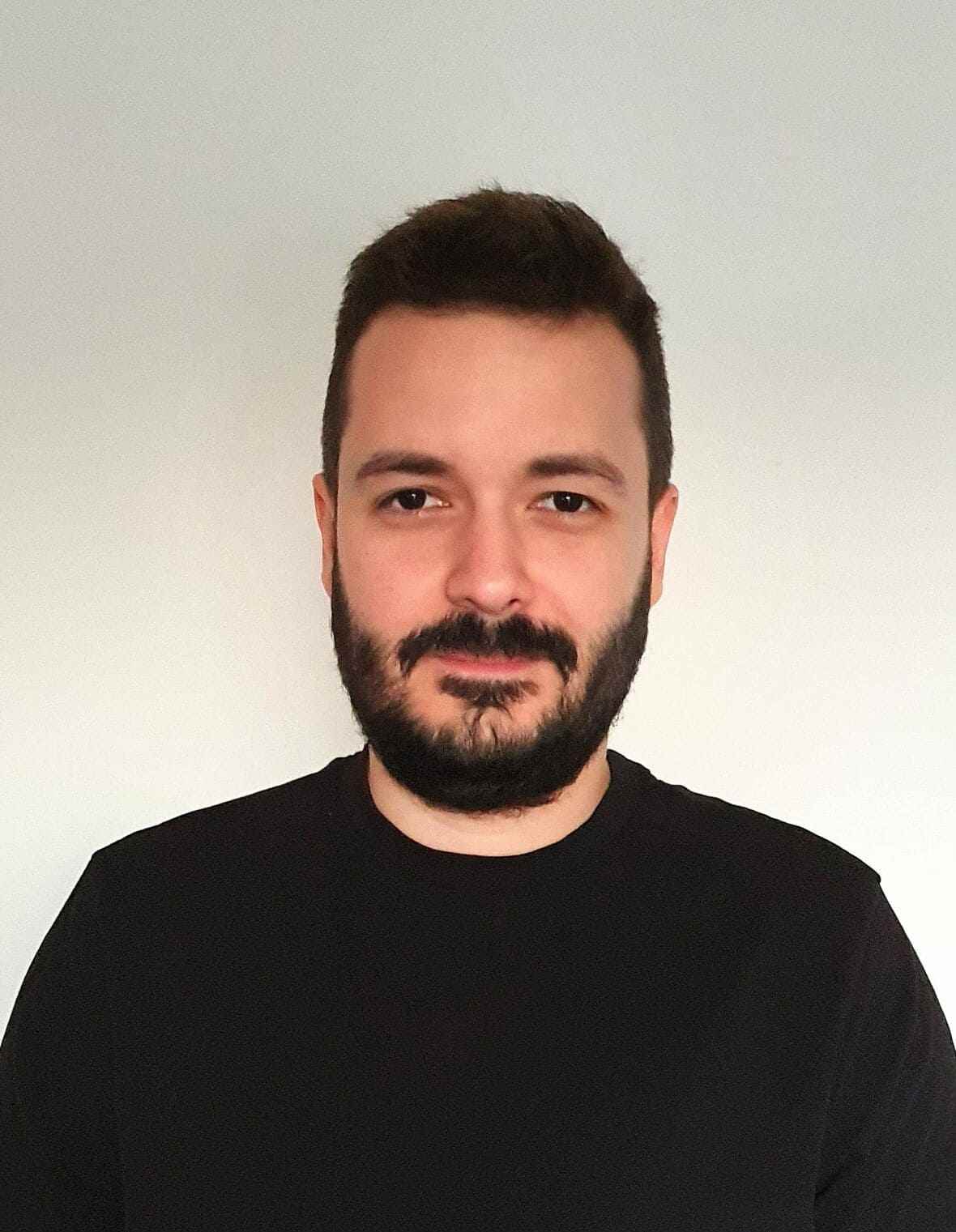
“First of all, strong communication skills are probably the most important trait. Secondly, proactivity is the middle name of every good leader able to strategically plan the steps ahead. Thirdly, problem-solving — because problems will arise sooner or later. The role of a good leader isn’t always to solve the problem per se, but to assign the right people to the right problems.”
💡 Clockify Pro Tip
Learn how a company that writes bids and tenders organizes its roles and organization for business growth:
Practice #5: Prioritize your projects

Your company will likely manage and track several projects during the same period.
So, you’ll need to consider your team’s other projects and assignments when setting deadlines and defining responsibilities.
Slavoljub Matić speaks to the importance of prioritization:

“Since we don’t have limitless resources, it’s essential to prioritize projects in one way or another. First, you need to tackle the project that brings the most value for the user and that can be implemented the fastest — we refer to this as maximizing business value.”
But that’s not the end of it. Matić stresses business value and urgency as 2 critical components for project prioritization:

“Business value, meaning ‘that which brings the greatest value to the client.’ Urgency, meaning ‘how fast we can or how fast we have to deliver a project’.”
To wrap up on the prioritization aspect, Matić says that project managers need to consider opportunity enablement and development effort to deliver value and assess available resources:

“Opportunity enablement or risk reduction — ‘a feature that doesn’t need to deliver value straight away but can do so in the future’ or ‘something that doesn’t introduce new value but may decrease potential risk.’ Development effort — how many resources it’s necessary to create something.”
In any case, be as transparent as you can be with your team. If you get buy-in from your coworkers for how to schedule project tasks, you’ll create a workforce that cares for the end results, building trust and rapport.
A good practice is to hold regular team meetings and keep everyone on the same page about new and ongoing projects.
💡 Clockify Pro Tip
Time is a limited resource for any project. Learn how to make foolproof time estimates while conducting your projects:
Practice #6: Manage the workload carefully

Make sure you have allocated tasks, roles, and responsibilities equally in your project management plan.
For instance, ask this question: Does one of your team members frequently end up overworked because they work on 5 different tasks, although other team members barely have anything to do?
Keep a close eye on this, and distribute work equally for the best resource use. Apart from being a project management best practice, managing your workload will also lessen the mental fatigue on your coworkers.
David Ciccarelli advises approaching the issue of workload management in several ways — but it all boils down to experience:

“Your senior leaders will stretch you to do more. However, a mature project manager knows how to have the conversation expressing that their team is tapped out. Come with examples of how this is impacting the team and that they may have to give up on some tasks or areas. This could be adjusting the deadlines, or swapping the order of when projects are scheduled to get done.”
To manage your resources even better, we suggest creating a resource plan. When team members have to work on several projects at the same time, they may lose focus quickly.
As one of the most critical aspects of project management, a resource management plan offers an overview of:
- Which resources are available, and
- How they are being managed.
For the best results, you can use a piece of resource planning and management software that makes all the difference.

If you have a new client or need to fill a shift, you can use the Schedule feature to see who’s busy, who’s available, and who’s overbooked.
💡 Clockify Pro Tip
Check out our guide on how to plan your resources effectively:
Practice #7: Monitor project progress at all times

Monitoring your team’s work and tracking progress is essential to preventing mishaps and delays.
But if you’re uncertain how to spot issues, ask yourself the following questions:
- Is the project progressing as planned?
- Is everyone doing their share of the work?
- Is the team working at a pace that aligns with the expected deadlines?
- Is there a hold-up in one phase of the project?
Saša Petrović thinks that you can tackle all issues by keeping a project dashboard:

“Tracking and reporting on projects — especially the big ones that take a long time to implement — requires preparation and maintenance of a dedicated project dashboard. This dashboard gives an overview of the key moments, milestones, and achievements. How you track your project progress depends on the size of the project itself, but once per week is fine.”
Among the main goals of monitoring project progress is to improve work performance in the long haul.
But how else can you do that apart from what Saša Petrović mentioned above?
Well, one of the best practices in project management is to keep a detailed project log of all the decisions your team has made during project implementation. That way, you can instantly inform new team members about what they need to know. Also, project managers will benefit from this project log if they run into smaller problems at some point.
💡 Clockify Pro Tip
Learn the ins and outs of tracking tasks and projects in our insightful blog post:
Practice #8: Communicate with your team and ask for feedback
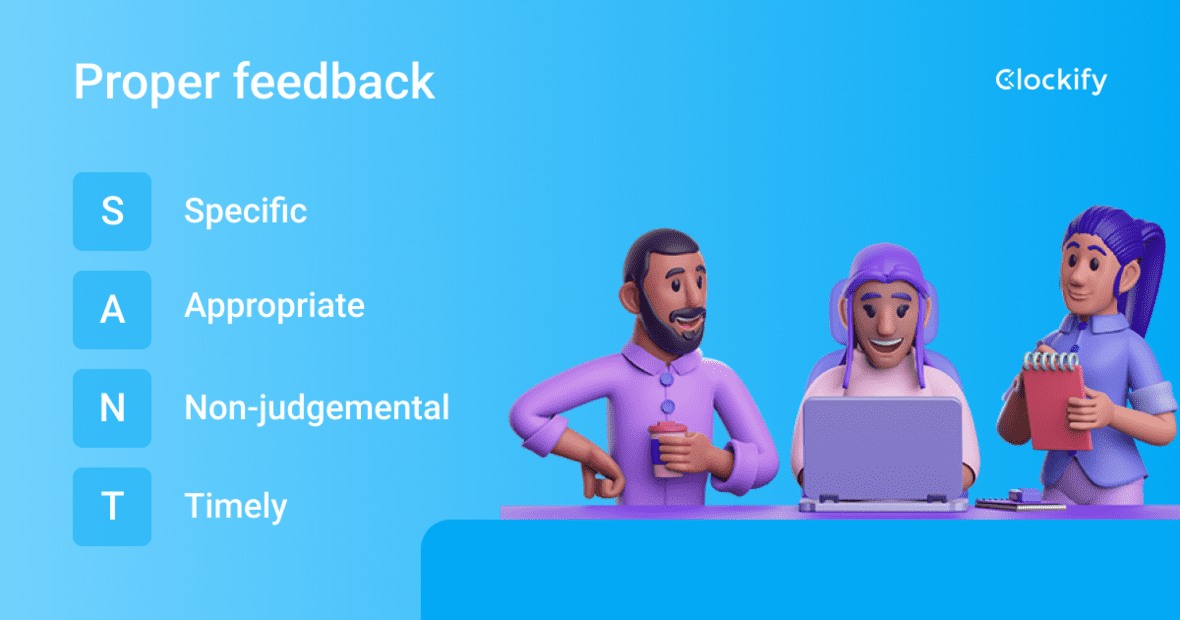
To stay on track with what everyone is currently working on, how well they are progressing, and whether there are problems with the project, your team will need to communicate.
So, for every question, problem, or dilemma you have — talk about it. Answer the questions, figure out the problems, and solve the dilemmas together.
One of the quickest ways to communicate with your team is through a team chat app. For example, you can use Pumble to:
- Improve productivity,
- Centralize all communication,
- Allow faster collaboration,
- Reduce the number of emails you exchange, and
- Save time overall.
Saša Petrović thinks that effective communication starts by onboarding everyone involved in the project:

“Team communication entails maintaining contact with key stakeholders and those in charge of execution. A good approach is to prepare a communication plan where you define the channels, frequency, and type of information to be provided. Essentially, clear, timely, and transparent communication are some of the key conditions for a successful project.”
Apart from that, we suggest asking for feedback from team members occasionally. This way, you will nurture trust and rapport. In giving and receiving proper feedback, you need to make it:
- Specific,
- Appropriate,
- Non-judgemental, and
- Timely.
If you apply this feedback strategy, you’ll prevent performance issues and stop wasting valuable time.
💡 Clockify Pro Tip
If you want to find out the essential stages your team goes through until they reach optimal performance, read our comprehensive guide about the 5 stages of group development:
Practice #9: Take precautions against project scope creep

Many projects tend to increase in volume and workload over time — that’s called scope creep.
For illustration, researchers have conducted a study of practitioners in the construction industry to learn whether scope creep affects project success to a large degree. In a nutshell, they found that scope creep factors — like organizational, technological, and human — reduce the chances of construction projects being successful.
David Ciccarelli believes that reasonable deadlines are the answer to project scope creep:

“What might feel like arbitrary dates are actually what I call ‘forcing functions’ to complete a project within a reasonable amount of time. Setting the deadline near the end of a quarter is effective, so it aligns with the performance management cycle. Completing the project on time is something to celebrate at the quarterly performance review.”
So, if you plan your project carefully and anticipate all the tasks and subtasks, you’ll be secure against scope creep.
To do so, carefully calculate the budget and time needed to finish all tasks and subtasks on time — and with the expected quality.
💡 Clockify Pro Tip
If you want to enhance your project predictability further, learn how to overcome planning fallacy:
Practice #10: Consider all project risks

According to Security Magazine, a mere 30% of companies have an enterprise risk management process in place. Companies that fail to introduce such a system have issues spotting weaknesses before they turn into a catastrophe. What’s more, an enterprise risk management process can help organizations take immediate action if the need arises.
No matter the project management tools and techniques you use, each project has potential problems that may arise during project implementation.
The trick to making sure you painlessly cruise past these problems lies in anticipating them before they happen.
So, aim to use your experience to define potential problems with project stages and tasks.
Saša Petrović believes that most projects can be affected by a few common risks:

“There’s a group of risks that can affect (almost) every project. These include:
a) understanding the requirements,
b) quality assessment of required resources and time,
c) availability of reliable and quality implementers and team stability,
d) accepting changes made by future users and the support team, and
e) transition period.”
For this purpose, we recommend building a risk response team that can easily tackle issues as they arise.
In a nutshell, a risk response team is a group of professionals inside the organization who address problems as soon as they notice them. This group is in charge of the following 4 steps:
- Identifying,
- Assessing,
- Strategizing, and
- Monitoring.
In most organizations, effective project managers and executives also comprise the risk response team.
💡 Clockify Pro Tip
Among the biggest project risks are those associated with unplanned costs. Luckily, we compiled an insightful article on how to control your costs for any project — read it here:
Practice #11: Take the time to analyze the project after completion

Once the project work is done, take the time to analyze it. Highlight what you did well — and what you could do better in the future.
Analyze the time it took to finish each stage and single out the tasks that took the most effort. You’ll want to allocate more time to such tasks in future projects.
And, of course, commend the team for their hard work and dedication. They’ve earned it.
Saša Petrović believes that analyzing the projects upon completion is one of the key pieces of information for implementing future projects:

“In essence, I analyze 3 key moments:
1) the initial plan vs. the final plan,
2) planning and organizing budgets and workforce, and
3) recognizing and addressing risks.”
Moreover, try to do the analysis as a team. According to meeting statistics, employees become more productive over time when they are constantly involved in interaction processes with other team members.
As the oldest trick in the book, we recommend learning from your mistakes and the things you did well. For this purpose, it’s best to schedule a meeting with your team to discuss the shortcomings of all project management strategies.
Taking the time to analyze the project after completion increases your team’s performance in the long run.
💡 Clockify Pro Tip
During the analysis stage after project completion, many project managers fail to assess how their team spent their time on the project. To learn more about why it’s critical to understand time use, read our short guide on time tracking for project management:
FAQs about project management best practices
In this section, we’ll cover some frequently asked questions about project management best practices. Here, you’ll find out what many project managers struggle with and how to make the process of managing projects easier.
What is PMO?
PMO stands for project management office — a department in large organizations that’s set up to improve efficiency and standardize processes. A PMO is typically established when projects are consistently failing to meet budgets, scope, or deadlines.
What is PMO best practice?
PMO best practice suggests that an organization’s dedicated department should:
- Prioritize and select the most urgent tasks first,
- Manage risk and engage stakeholders,
- Allocate resources,
- Report on progress, successes, and failures, and
- Use the right tech and tools.
Of course, all of these points need to be in line with the organizational strategy of the company in question.
What are the top 3 things in project management?
The top 3 things in project management include:
- Management — or how well you manage your resources, such as time, budgets, equipment, knowledge, etc.,
- Communication — or how well you communicate with team members and stakeholders, and
- Leadership — or how project managers act when things go wrong or when they need to assign tasks.
What are the 3 C’s of project management?
The 3 C’s of project management include coordination, communication, and collaboration.
💡 Clockify Pro Tip
From project management tools to planning and calendar-sharing tools, read all about the best online collaboration tools for teams:
What makes a good project manager?
A good project manager is a person who is highly organized and efficient in:
- Meeting tight deadlines,
- Satisfying interested parties (or stakeholders),
- Managing time, budgets, and other resources,
- Identifying issues before they arise, and
- Tackling those issues effectively if they happen.
Saša Petrović thinks that the job of a good project manager is to effectively communicate to reach the right decisions:

“A typical PM job is highly complex and packed with challenges. One of the critical project management skills is to effectively communicate with all involved parties — also called stakeholders. Successful communication sets the stage for the team to prepare itself timely and for all interested parties to get reliable information that helps them reach the right decisions.”
What are the 7 steps to project planning success for project managers?
Depending on the experts you ask, there can be as little as 3 or as many as 20 steps to project planning success for project managers.
For ease of use, some experts suggest considering 7 steps, including:
- Setting clear project goals and objectives,
- Establishing expectations before the project begins,
- Specifying credible risks and how you’ll tackle them if the need arises,
- Decreasing the number of meetings to only the bare minimum,
- Scheduling a kickoff meeting with team members and stakeholders,
- Getting progress reports on resource allocation, budgets, and deadlines, and
- Setting up the right tools to handle your workload.
Other project planning best practices do exist, but here, we have focused on addressing only the most essential ones.
How to excel at project management with Clockify
To manage any project and see where your time is going for each, try out a project time tracking software like Clockify.
Available on most platforms, Clockify helps you:
- Schedule who’s responsible for what task,
- Maximize the time you spend on high-value projects, and
- Minimize the time you spend on non-billable tasks.
Below, you’ll see what the Schedule tab looks like in Clockify — you only have to select and drag a project or task left or right to schedule a project or an employee:
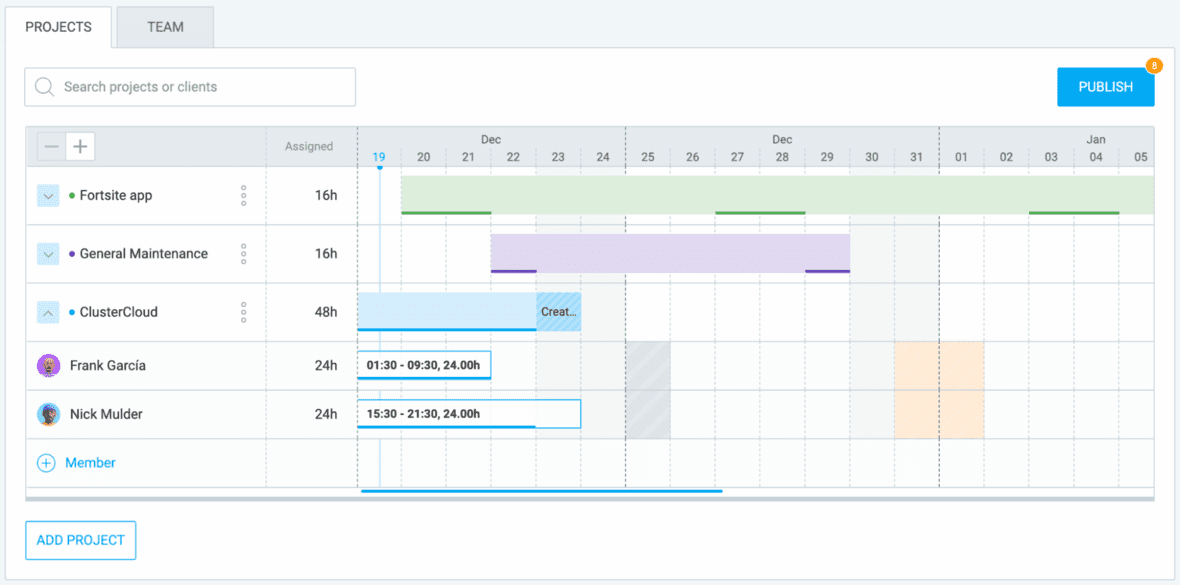
With the Schedule feature, you get to create assignments for each team member, including:
- Day and start time,
- Hours per day,
- Billability status, and more.
However, if you’d like to have a dedicated project management app, together with a time tracking app and a team chat app, you can get them all at a special bundle price. Such software may help you speed up project completion even more.
To design a more sustainable environment for your projects without missing a beep, consider trying out a piece of project tracking software.


